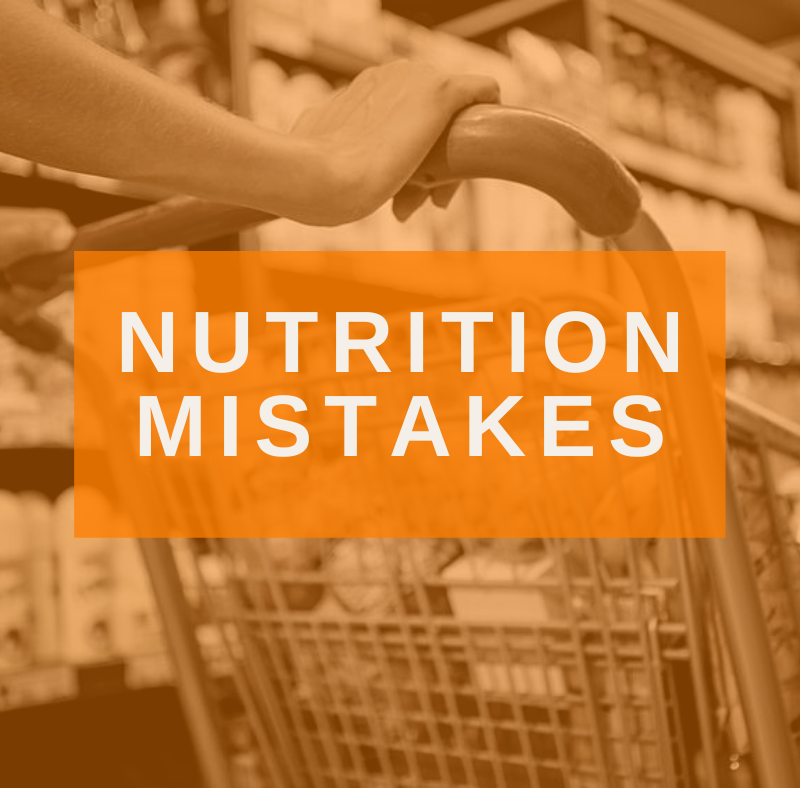
To say our fitness clients are bombarded with multiple and often conflicting “healthy eating” messages would be a gross understatement. The topic of nutrition is as deep as it is wide and our clients are often left feeling “unbalanced” in the area of food and nutrition. While fitness professionals have a limited scope of practice when it comes to providing clients with nutrition advice, we do have a responsibility to help our clients identify nutrition behavior patterns that may be counterproductive to the achievement of their fitness goals. Here are five nutrition mistakes every fitness professional can be mindful of and share with his or her clients.
Going all low-fat
There are some great low-fat (and fat free) food options to be found in the grocery store. For example, 2% Greek yogurt, skinless chicken breasts, fruits, vegetables, and a variety of whole-grain sources are all low in fat. These are foods that are considered healthy options for the general population. However, many individuals can become trapped in the “fat is fattening” mentality which leads them to cut out this important macronutrient.
The important considerations associated with low-fat or fat-free foods (other than those in their naturally occurring state) are often higher in sugar and/or sodium – two ingredients we want to be mindful of. Discuss with your clients the value of fat and help them differentiate between saturated and unsaturated sources of fat and which ones can be beneficial to their health.
Going gluten-free
There a certain stigma that is often associated with gluten-containing products. In short, “gluten is bad”. This is true for those with celiac disease or a gluten-intolerance. Going gluten-free for the sake of either eliminating gluten or reducing carbs does not make a diet healthier for the general population. In fact, eliminating sources of whole grains can increase the risk of health concerns such as cardiovascular disease. If you have a client who is considering going gluten-free, or who is embracing a Paleo diet, encourage him or her to seek guidance (and a diagnosis supporting the need) of a medical professional.
Focusing on calories only
From a physics standpoint, a calorie is a calorie; it is a unit of energy. However, from a physiological/chemical/metabolic perspective, not all calories are created equal. For example, consuming 120 calories of protein from lean chicken is different than consuming the same number of calories from processed food filled with sugar, salt, and preservatives.
Here, we need to encourage our clients to look at high-quality calories versus low-quality calories and distinguish between energy-dense foods and nutrient-dense foods. If clients only focus on consuming calories instead of consuming food, they will most likely miss out on critical nutrients that will support both their performance and health.
Replacing meals with energy bars
An energy bar or protein bar is only as good as its ingredients. There are countless “bar-based” foods that are highly processed and contain relatively little to no actual quality food source. Some of these products, when evaluated for energy and nutrient density are little more than a candy bar with a fancy label and an underdelivered promise to “boost energy and performance.” You can help your clients understand the nuances of different energy and protein bars by helping them critically evaluate the ingredients. Look out for added sugar (i.e. chocolate coating, syrup, etc.) and artificial ingredients. Select an option with a good amount of protein, nuts, and natural fruit.
Overlooking the ingredient list entirely
The nutrition facts panel is a great tool that, when understood, can allow individuals to quickly review a food item for its calorie content and macronutrient breakdown. However, one aspect of a product that is less emphasized in evaluating the overall quality is the ingredient list. The ingredient list contains a significant amount of useful information. For example, a facts panel may show “Trans fat – 0 grams), but the ingredient list notes “partially hydrogenated soybean oil”, which is a trans fat. There may be no discernable or traceable amount of trans fat in a single serving of that product, but if a person consumes more than a single serving, he or she is consuming this unhealthy substance. The ingredient list can also reveal the sources of added sugar and preservatives. A product’s quality is based on its contents.
This list is not an exhaustive list of nutrition mistakes. It is, however, a collection of some of the most common mistakes our clients are drawn to. As a fitness professional, it is your role to help clients understand what healthy eating habits look like and what landmines to avoid in order to support their physical performance and goal achievement. If you don’t already have a registered dietitian in your professional network, add one or two to be a referral source for you and your clients. If you find your clients are in need of something more substantive than simple guidance (i.e. nutrition counseling, medical nutrition therapy, diet/meal plans, etc.), refer him or her to an expert trained in the field.







